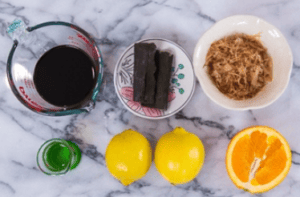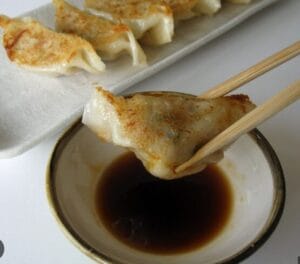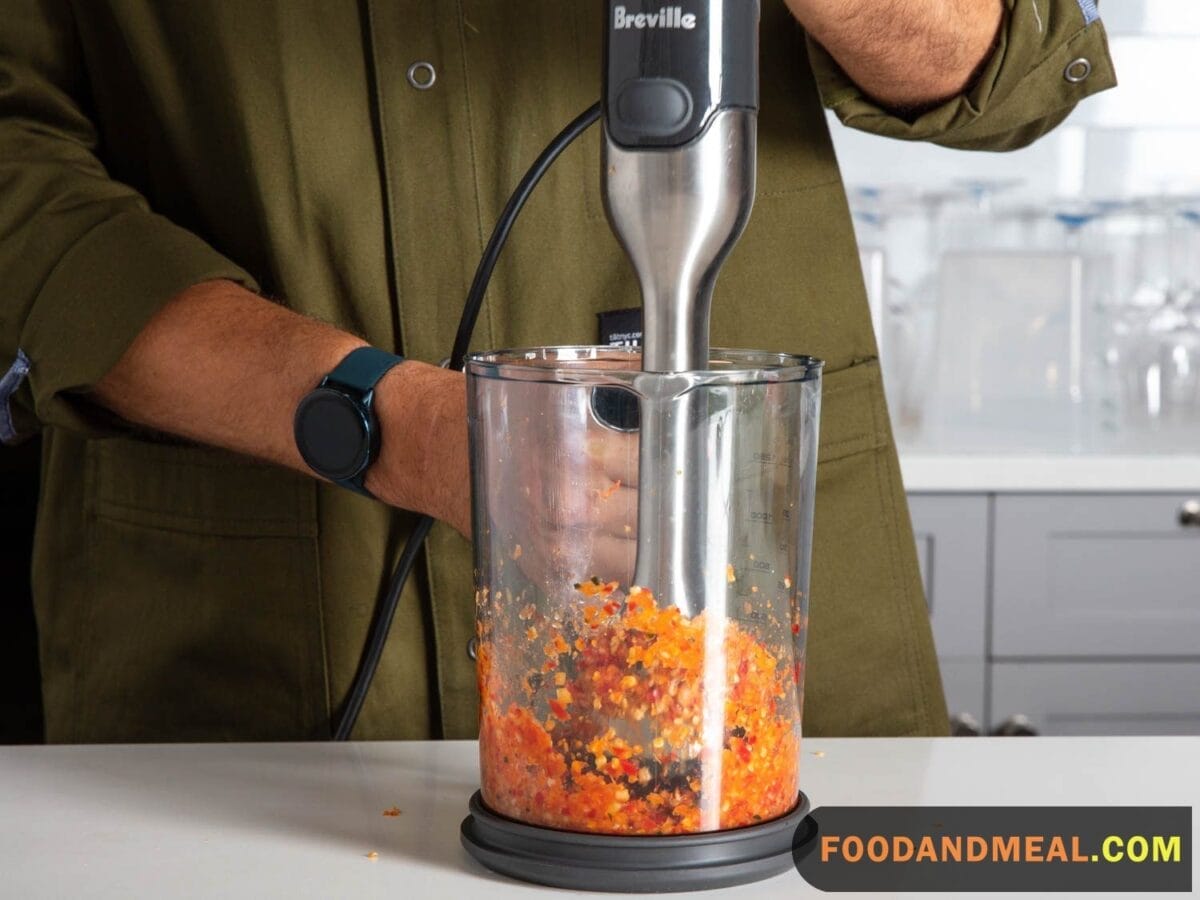Only have 5 minutes? That’s all you need to make this easy ponzu sauce recipe. Rice vinegar, soy sauce, lemon juice, mirin and dashi stock quickly combine for a sweet, salty and sour Japanese citrus-based sauce perfect for dipping and drizzling.
As I was browsing through my pantry the other day, I came across an unopened bottle of ponzu sauce that I had picked up on a whim several months ago. Seeing that bright orange-yellow liquid made me think back to the last time I had enjoyed ponzu – as a refreshing dipping sauce alongside tender slices of beef at my favorite Japanese restaurant downtown.
In that moment, I was filled with cravings and knew I had to find a way to recreate that delightful ponzu experience at home. Though I wasn’t terribly familiar with the ingredient, I was excited to learn more about the sauce’s unique citrusy-umami flavor and how it could elevate my home cooking.
After doing some reading on traditional ponzu recipes, I felt eager to try my hand at making it fresh using yuzu or sudachi citrus, bonito flakes, konbu seaweed and mirin rice wine. However, given some ingredients were hard to source, I decided to start simple with a soy sauce ponzu blend brightened up with fresh lemon and orange juice.
The result was a well-balanced sweet-sour-salty sauce that made ordinary proteins like chicken, fish and tofu pop with flavor. Drizzled over a refreshing cucumber salad or as a dip for dumplings, it added a delightful note of sunshine and umami to every bite.
I’m thrilled to have discovered new ways to savor this versatile Japanese pantry staple. I can’t wait to continue experimenting with ponzu in marinades, stir fries, noodle dishes and more! No matter how I end up using it, ponzu sauce always seems to brighten up my cooking with its lively, citrusy personality.
What is ponzu fresh sauce ?
Ponzu is a tangy and refreshing Japanese sauce, bursting with citrusy flavors that dance on my taste buds. As I savor its sweet yet tart punchiness, memories of summers spent visiting my grandmother in Japan flood my mind. She would serve bright sashimi glistening with homemade ponzu, the aroma transporting me back to her quiet countryside home.
Though difficult to find the right citrus outside Japan, with some effort, I can recreate a taste of nostalgia. Blending yuzu or lemon with mirin rice wine, a hint of bonito, and light soy sauce captures that delicate balance of flavors I loved. A few drops elevate vegetables, fish, meat – even humble rice crackles with new life.
For me, ponzu is the taste of people and places I cherish. Its bracing acidity and gentle sweetness stirs my heart along with my palate. This sauce may be known for its versatility, but it will always hold a special meaning for me.
Best homemade Ponzu Sauce Recipes
Ponzu Sauce is a thin, citrus-based condiment that is common in Japanese cuisine. It has a thin, watery consistency and is almost colorless. Soy sauce is often added to ponzu to make it more sour and tangy. It is commonly used on sushi and in Asian dishes, and is an essential part of the Japanese kitchen. Read on to learn more about how to make Ponzu Sauce. Let’s get started!
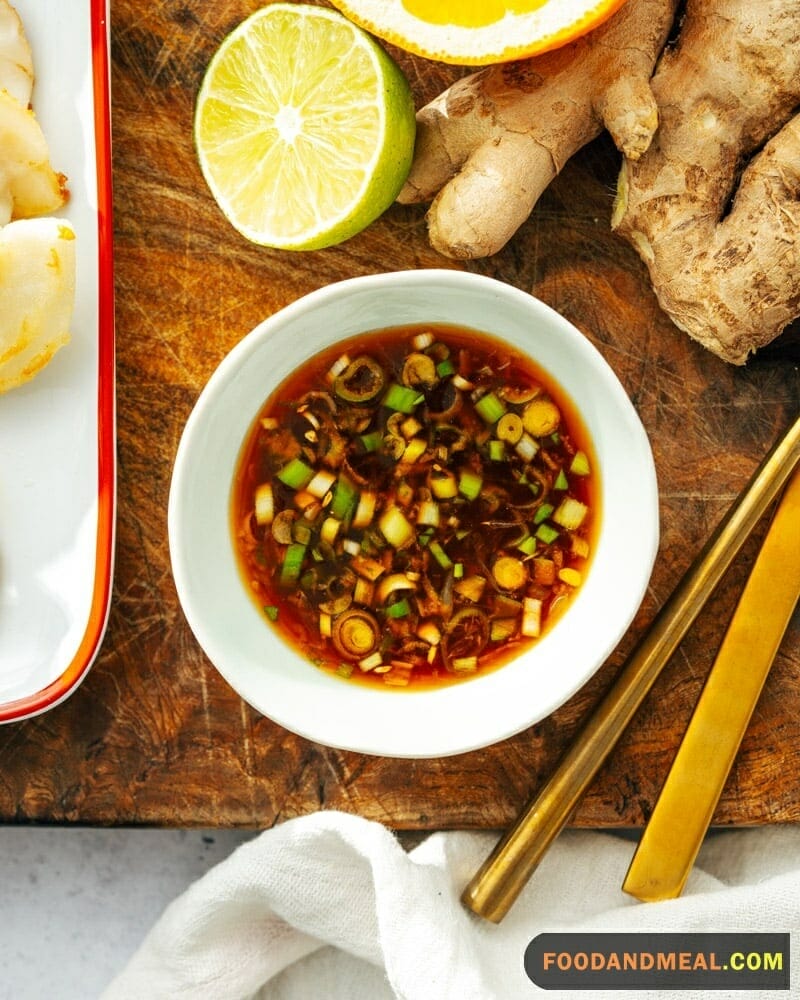
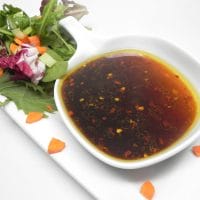
Ponzu Sauce
Equipment
Ingredients
- ½ cup soy sauce
- ¼ cup orange juice
- 2 tablespoons lemon juice
- 1 tablespoon water
- 1 tablespoon mirin
- 1 teaspoon brown sugar
- ¼ teaspoon red pepper flakes crushed
Instructions
- Combine all the ingredients in a small bottle, and shake to combine.

- Store it in the refrigerator.

- Drizzle over gyoza,tempura, or meat dishes.

Video
Notes
Nutrition
© Food And Meal
This website provides approximate nutrition information for convenience and as a courtesy only. Nutrition data is gathered primarily from the Spoonacular Database, whenever available, or otherwise other online calculators.
Making Ponzu Sauce Using a Blender
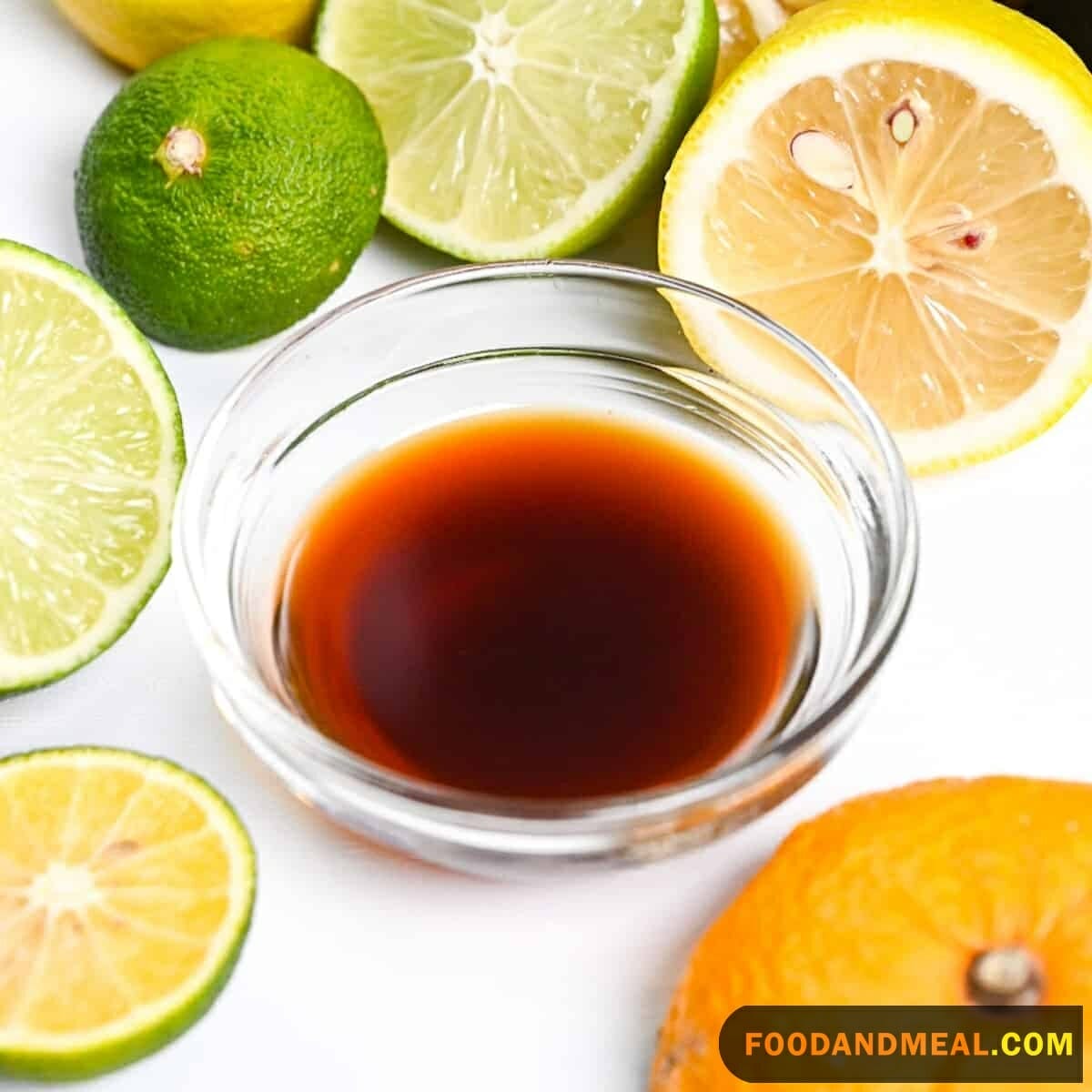
Blending the ingredients together was quicker and easier than I expected. I simply gathered the soy sauce, citrus juice, mirin, bonito flakes, kelp, and lemon zest and combined everything in my blender. In just a minute or two, I had a smooth, pourable sauce base ready for steeping.
But, it’s important to balance the intensity of the citrus with the umami depth of the soy sauce. One might experience a sense of anticipation and excitement as they blend these ingredients, watching the transformation into a smooth, aromatic liquid. It’s almost magical how the sharp citrus notes marry with the savory soy, creating a symphony of flavors.
What is substitutes for ponzu sauce ?
What can i use instead of ponzu???. Soy sauce mixed with a splash of citrus juice stands out as a simple yet effective substitute, capturing the essence of ponzu’s flavor profile. The tangy zest of lemon or lime juice harmonizes with soy sauce’s depth, creating a symphony of taste that’s both familiar and new.
For those seeking a gluten-free option, tamari paired with vinegar offers a similar savory experience. And for a touch of sweetness reminiscent of ponzu’s complexity, a dash of honey or sugar can be added to the mix. Each alternative brings its own character to the table, allowing for a personal touch in every recipe.
Eel sauce vs ponzu ?
Eel sauce and ponzu sauce, both staples in Japanese cuisine, offer distinctly different experiences for the palate.
- Eel sauce, with its rich, sweet, and savory profile, brings a comforting warmth to dishes. It’s like a gentle hug for your taste buds, enhancing the flavors of eel sushi rolls or grilled fish with its caramelized depth.
- Ponzu, on the other hand, is the zesty counterpart, a lively dance of citrus on the tongue. Its tangy and slightly sweet notes cut through the richness of seafood, offering a refreshing splash that awakens the senses.
While eel sauce feels like a traditional melody, ponzu sings a modern, vibrant tune. Both are delightful, each in their own unique way, and choosing between them depends on the culinary adventure one desires.
Does ponzu sauce go bad ?
Ponzu sauce, with its delightful dance of citrus and umami, is a staple in my kitchen, often bringing a zesty spark to my culinary creations. However, like all good things, it does have a shelf life. An unopened bottle can grace your pantry for up to two years, but once the seal is broken, the countdown begins. I’ve found that the vibrant flavors start to fade, subtly at first, reminding us that nothing lasts forever. Refrigeration after opening extends its life, yet I heed the advice of experts who suggest using it within a month for that peak freshness. Homemade versions, crafted with love and care, are fleeting joys, best savored within a few weeks. It’s a gentle reminder to enjoy the present moment and the flavors within it.
Expert Tips for making Ponzu Sauce
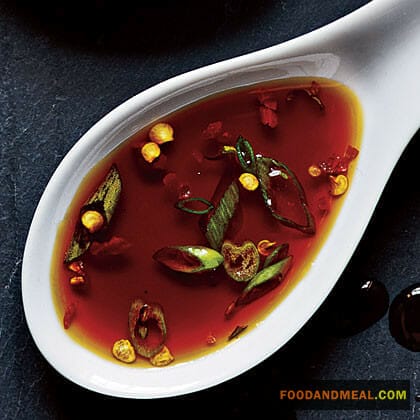
Cooking Notes
I find it extremely useful in my cooking repertoire. A few drops can instantly brighten up a stir fry, salad dressing, dipping sauce, or marinade.
I love experimenting with ponzu – it’s fun to discover new ways to use its sweet-sour-salty profile. Lately I’ve tried it on broiled fish and chicken, with delicious results. The bright acidity really brings out the flavors of the meat. I also like brushing it on steamed veggies like green beans or bok choy for a flavor boost.
When cooking with ponzu, a little goes a long way. Start with small amounts, taste, and adjust as desired. Too much can make a dish unpleasantly tart. I’ve learned to add it gradually and thoughtfully. With the right balance, it provides the perfect zing!
Overall I find ponzu to be an extremely versatile ingredient that makes cooking more enjoyable. It allows me to easily incorporate new flavors into everyday dishes. I would recommend home cooks experiment with ponzu more often. Used properly, it can greatly improve the flavor of many foods.
Serving Suggestions

- Drizzle ponzu sauce over sashimi, nigiri sushi, or sushi rolls for a refreshing complement to the rich flavors of the fish. The acidity of the ponzu also helps cut through fattier fish like salmon and tuna.
- Use it as a dip for gyoza, shrimp tempura, or vegetable tempura. The ponzu sauce adds welcomed acidity and complements the crispy fried foods.
- Whisk together ponzu sauce, soy sauce, sesame oil, and chili garlic sauce for a quick sauce to toss with noodles like yakisoba or lo mein. The ponzu adds a nice citrus note.
- Mix ponzu with mayonnaise or Greek yogurt for a tangy sauce or dressing for chicken, fish or tofu. It also makes a great vegetable dip.
- Stir fry meats, seafood or tofu in ponzu sauce instead of soy sauce alone. The bright citrus flavor elevates simple stir fries.
- Marinate chicken, pork, beef or fish in a ponzu sauce mixture before grilling for added flavor.
- Drizzle over roasted or grilled vegetables like eggplant, zucchini, carrots and asparagus.
Top 9 FAQs about Ponzu Sauce recipe
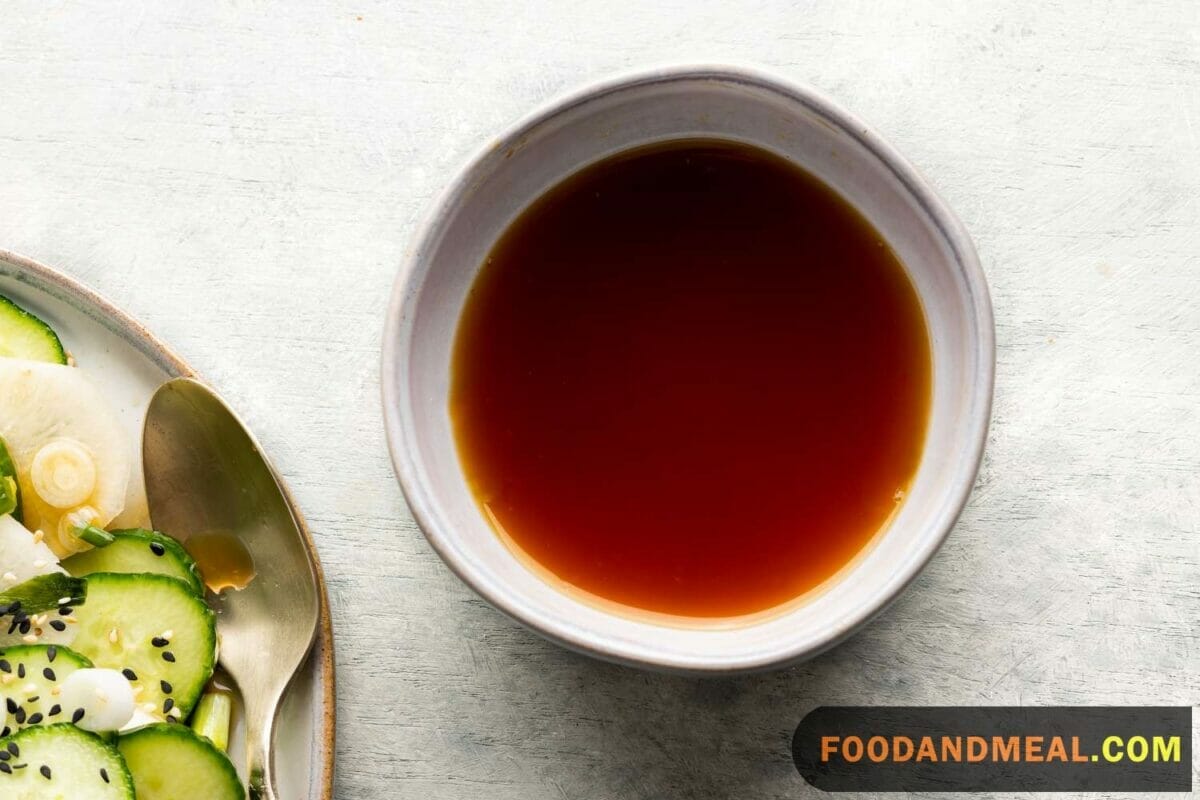
- What is ponzu sauce made of? Ponzu sauce is typically made of soy sauce, citrus juice (such as yuzu or lemon), rice vinegar, mirin, and dashi (Japanese stock).
- Is Hoisin the same as ponzu? No, Hoisin sauce is different from ponzu. Hoisin is a Chinese sauce with a sweet and savory flavor, while ponzu has a tangy and citrusy profile.
- Does ponzu sauce contain fish? Traditional ponzu sauce recipe includes dashi, which can be fish-based. However, vegetarian and vegan variations may use kombu (kelp) or other plant-based substitutes.
- What is ponzu similar to? Ponzu is similar to a citrus-infused soy sauce, offering a balanced blend of salty, sweet, and tangy flavors.
- How Long Can I Store Ponzu Sauce? You can store Ponzu Sauce in an airtight container in the refrigerator for up to a week. The flavors will continue to meld over time.
- Can I Make a Low-Sodium Version? Absolutely. Opt for low-sodium soy sauce or tamari to reduce sodium content while maintaining the delicious flavor.
- Can I Use Bottled Citrus Juice? Freshly squeezed citrus juice is recommended for the best flavor, but bottled juice can be used if fresh is unavailable.
- Does Ponzu Sauce Need to Be Refrigerated? Yes, store it in the refrigerator. This helps maintain its freshness and flavor.
- Can I Freeze Ponzu Sauce? Freezing may alter the consistency and flavor, so it’s best to make fresh batches as needed.
Conclution
I’m so glad I decided to experiment with ponzu sauce recipe in my home cooking. This versatile Japanese citrus-soy blend has become a pantry staple I can’t live without! I love drizzling it over proteins, whisking it into dressings and dipping an array of dumplings into its bright, balanced flavor.
Ponzu sauce always manages to make ordinary ingredients taste extraordinary. I hope the recipes I’ve shared on Food and Meal have inspired you to give this tasty condiment a try. Pick up a bottle from your local Asian grocery store and start elevating your home cooking tonight. Your tastebuds will thank you!
I can’t wait to continue my ponzu journey and share new recipe ideas using this brilliant sauce here on Food and Meal. Thanks so much for reading along on my flavorful adventure. Now grab your apron and let’s get cooking!
I'm James F Anderson, a noted sous chef from London and a Le Cordon Bleu alumnus. My career began in a Michelin-starred Parisian eatery, where my blend of classic and contemporary cooking, using seasonal ingredients, earned accolades. Recognized in culinary publications and on cooking shows, I’m committed to mentoring aspiring chefs and delivering memorable dining experiences, marking me as a standout talent in the culinary world.



